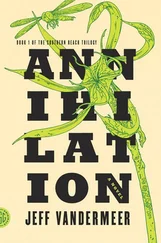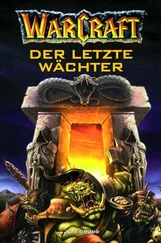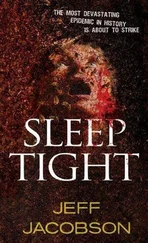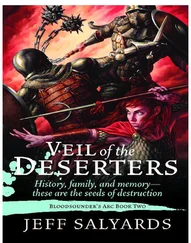Jeff Molofee - NeHe's OpenGL Tutorials
Здесь есть возможность читать онлайн «Jeff Molofee - NeHe's OpenGL Tutorials» весь текст электронной книги совершенно бесплатно (целиком полную версию без сокращений). В некоторых случаях можно слушать аудио, скачать через торрент в формате fb2 и присутствует краткое содержание. Жанр: Программирование, на английском языке. Описание произведения, (предисловие) а так же отзывы посетителей доступны на портале библиотеки ЛибКат.
- Название:NeHe's OpenGL Tutorials
- Автор:
- Жанр:
- Год:неизвестен
- ISBN:нет данных
- Рейтинг книги:3 / 5. Голосов: 1
-
Избранное:Добавить в избранное
- Отзывы:
-
Ваша оценка:
- 60
- 1
- 2
- 3
- 4
- 5
NeHe's OpenGL Tutorials: краткое содержание, описание и аннотация
Предлагаем к чтению аннотацию, описание, краткое содержание или предисловие (зависит от того, что написал сам автор книги «NeHe's OpenGL Tutorials»). Если вы не нашли необходимую информацию о книге — напишите в комментариях, мы постараемся отыскать её.
NeHe's OpenGL Tutorials — читать онлайн бесплатно полную книгу (весь текст) целиком
Ниже представлен текст книги, разбитый по страницам. Система сохранения места последней прочитанной страницы, позволяет с удобством читать онлайн бесплатно книгу «NeHe's OpenGL Tutorials», без необходимости каждый раз заново искать на чём Вы остановились. Поставьте закладку, и сможете в любой момент перейти на страницу, на которой закончили чтение.
Интервал:
Закладка:
* DOWNLOAD Visual C++Code For This Lesson.
* DOWNLOAD Borland C++ Builder 5.0Code For This Lesson. (Conversion by Neil Flynn)
* DOWNLOAD CygwinCode For This Lesson. (Conversion by Stephan Ferraro)
* DOWNLOAD DelphiCode For This Lesson. (Conversion by Brad Choate)
* DOWNLOAD Game GLUTCode For This Lesson. (Conversion by Milikas Anastasios)
* DOWNLOAD GLUTCode For This Lesson. (Conversion by Kyle Gancarz)
* DOWNLOAD IrixCode For This Lesson. (Conversion by Lakmal Gunasekara)
* DOWNLOAD JavaCode For This Lesson. (Conversion by Jeff Kirby)
* DOWNLOAD Jedi-SDLCode For This Lesson. (Conversion by Dominique Louis)
* DOWNLOAD LinuxCode For This Lesson. (Conversion by Richard Campbell)
* DOWNLOAD Linux/GLXCode For This Lesson. (Conversion by Mihael Vrbanec)
* DOWNLOAD Linux/SDLCode For This Lesson. (Conversion by Ti Leggett)
* DOWNLOAD Mac OSCode For This Lesson. (Conversion by Anthony Parker)
* DOWNLOAD Mac OS X/CocoaCode For This Lesson. (Conversion by Bryan Blackburn)
* DOWNLOAD MASMCode For This Lesson. (Conversion by Nico (Scalp))
* DOWNLOAD Visual C++ / OpenILCode For This Lesson. (Conversion by Denton Woods)
* DOWNLOAD Power BasicCode For This Lesson. (Conversion by Angus Law)
* DOWNLOAD PythonCode For This Lesson. (Conversion by John Ferguson)
* DOWNLOAD SolarisCode For This Lesson. (Conversion by Lakmal Gunasekara)
* DOWNLOAD Visual BasicCode For This Lesson. (Conversion by Ross Dawson)
* DOWNLOAD Visual BasicCode For This Lesson. (Conversion by Peter De Tagyos)
* DOWNLOAD Visual FortranCode For This Lesson. (Conversion by Jean-Philippe Perois)
Lesson 07
In this tutorial I'll teach you how to use three different texture filters. I'll teach you how to move an object using keys on the keyboard, and I'll also teach you how to apply simple lighting to your OpenGL scene. Lots covered in this tutorial, so if the previous tutorials are giving you problems, go back and review. It's important to have a good understanding of the basics before you jump into the following code.
We're going to be modifying the code from lesson one again. As usual, if there are any major changes, I will write out the entire section of code that has been modified. We'll start off by adding a few new variables to the program.
#include // Header File For Windows
#include // Header File For Standard Input/Output ( ADD )
#include // Header File For The OpenGL32 Library
#include // Header File For The GLu32 Library
#include // Header File For The GLaux Library
HDC hDC=NULL; // Private GDI Device Context HGLRC
hRC=NULL; // Permanent Rendering Context
HWND hWnd=NULL; // Holds Our Window Handle
HINSTANCE hInstance; // Holds The Instance Of The Application
bool keys[256]; // Array Used For The Keyboard Routine
bool active=TRUE; // Window Active Flag
bool fullscreen=TRUE; // Fullscreen Flag
The lines below are new. We're going to add three boolean variables. BOOL means the variable can only be TRUE or FALSE. We create a variable called light to keep track of whether or not the lighting is on or off. The variables lp and fp are used to store whether or not the 'L' or 'F' key has been pressed. I'll explain why we need these variables later on in the code. For now, just know that they are important.
BOOL light; // Lighting ON / OFF
BOOL lp; // L Pressed?
BOOL fp; // F Pressed?
Now we're going to set up five variables that will control the angle on the x axis (xrot), the angle on the y axis (yrot), the speed the crate is spinning at on the x axis (xspeed), and the speed the crate is spinning at on the y axis (yspeed). We'll also create a variable called z that will control how deep into the screen (on the z axis) the crate is.
GLfloat xrot; // X Rotation
GLfloat yrot; // Y Rotation
GLfloat xspeed; // X Rotation Speed
GLfloat yspeed; // Y Rotation Speed
GLfloat z=-5.0f; // Depth Into The Screen
Now we set up the arrays that will be used to create the lighting. We'll use two different types of light. The first type of light is called ambient light. Ambient light is light that doesn't come from any particular direction. All the objects in your scene will be lit up by the ambient light. The second type of light is called diffuse light. Diffuse light is created by your light source and is reflected off the surface of an object in your scene. Any surface of an object that the light hits directly will be very bright, and areas the light barely gets to will be darker. This creates a nice shading effect on the sides of our crate.
Light is created the same way color is created. If the first number is 1.0f, and the next two are 0.0f, we will end up with a bright red light. If the third number is 1.0f, and the first two are 0.0f, we will have a bright blue light. The last number is an alpha value. We'll leave it at 1.0f for now.
So in the line below, we are storing the values for a white ambient light at half intensity (0.5f). Because all the numbers are 0.5f, we will end up with a light that's halfway between off (black) and full brightness (white). Red, blue and green mixed at the same value will create a shade from black(0.0f) to white(1.0f). Without an ambient light, spots where there is no diffuse light will appear very dark.
GLfloat LightAmbient[]= { 0.5f, 0.5f, 0.5f, 1.0f }; // Ambient Light Values ( NEW )
In the next line we're storing the values for a super bright, full intensity diffuse light. All the values are 1.0f. This means the light is as bright as we can get it. A diffuse light this bright lights up the front of the crate nicely.
GLfloat LightDiffuse[]= { 1.0f, 1.0f, 1.0f, 1.0f }; // Diffuse Light Values ( NEW )
Finally we store the position of the light. The first three numbers are the same as glTranslate's three numbers. The first number is for moving left and right on the x plane, the second number is for moving up and down on the y plane, and the third number is for moving into and out of the screen on the z plane. Because we want our light hitting directly on the front of the crate, we don't move left or right so the first value is 0.0f (no movement on x), we don't want to move up and down, so the second value is 0.0f as well. For the third value we want to make sure the light is always in front of the crate. So we'll position the light off the screen, towards the viewer. Lets say the glass on your monitor is at 0.0f on the z plane. We'll position the light at 2.0f on the z plane. If you could actually see the light, it would be floating in front of the glass on your monitor. By doing this, the only way the light would be behind the crate is if the crate was also in front of the glass on your monitor. Of course if the crate was no longer behind the glass on your monitor, you would no longer see the crate, so it doesn't matter where the light is. Does that make sense?
There's no real easy way to explain the third parameter. You should know that –2.0f is going to be closer to you than –5.0f. and –100.0f would be WAY into the screen. Once you get to 0.0f, the image is so big, it fills the entire monitor. Once you start going into positive values, the image no longer appears on the screen cause it has "gone past the screen". That's what I mean when I say out of the screen. The object is still there, you just can't see it anymore.
Leave the last number at 1.0f. This tells OpenGL the designated coordinates are the position of the light source. More about this in a later tutorial.
Читать дальшеИнтервал:
Закладка:
Похожие книги на «NeHe's OpenGL Tutorials»
Представляем Вашему вниманию похожие книги на «NeHe's OpenGL Tutorials» списком для выбора. Мы отобрали схожую по названию и смыслу литературу в надежде предоставить читателям больше вариантов отыскать новые, интересные, ещё непрочитанные произведения.
Обсуждение, отзывы о книге «NeHe's OpenGL Tutorials» и просто собственные мнения читателей. Оставьте ваши комментарии, напишите, что Вы думаете о произведении, его смысле или главных героях. Укажите что конкретно понравилось, а что нет, и почему Вы так считаете.








